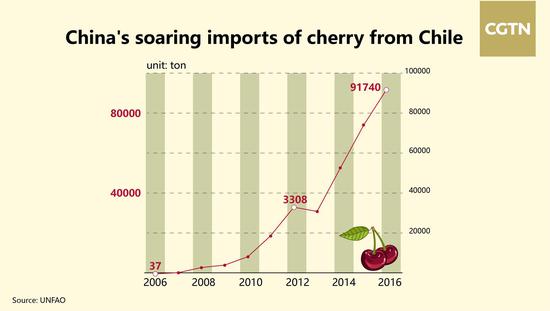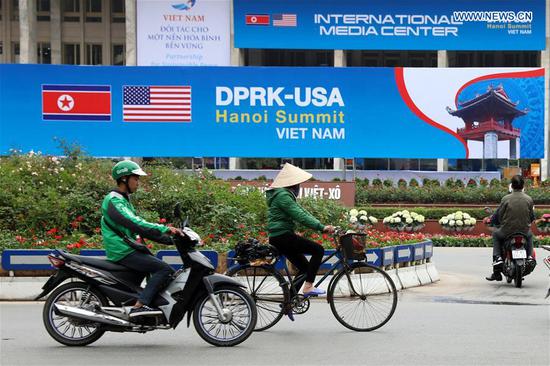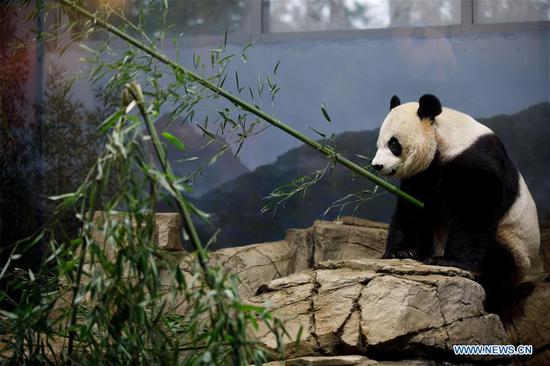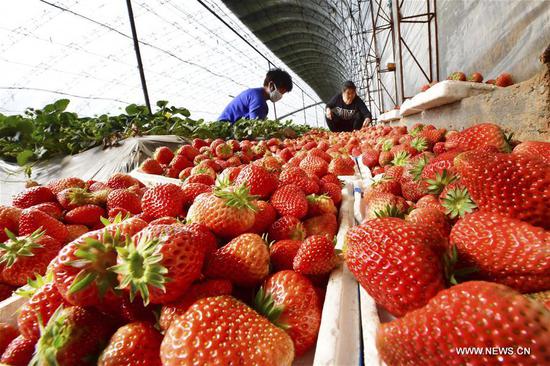A latest report on China's consumption of fresh fruits during the week-long Spring Festival by Miss Fresh, a Chinese e-commerce platform for fresh food items, revealed that the sales volume of Chilean cherries surged 32 times in 2019 year on year.
In a new online trend, many buyers are sharing the prices of cherries, ranging from one to six yuan. Some netizens even called the "affordability" of this high-end fruit as "cherry financial freedom."
Indeed, most Chinese could not afford cherries before domestic fresh food e-commerce platforms gained momentum in China. Back then, cherries could only be found in upscale supermarkets, selling at prices as high as 150 to 180 yuan (22 to 27 U.S. dollars) per kilogram.

The latter half of 2018 witnessed a surge in community-based group buying across China, especially in second- and third-tier cities.
"Although cherries are expensive, they sell like hot cakes! Thanks to the mode of group buying in second- and third-tier cities, that's enhancing people's appetite," said Qu Jia, the director of a produce e-commerce platform in east China's Shandong Province.
Statistics from the General Administration of Customs show that in 2018, Chile, the U.S., Canada, Australia and New Zealand were the main source of China's cherry import, and nearly 90 percent of all cherries came from Chile.
The hot selling of Chilean cherry is a microcosm of the popularity of imported fruits such as Thai durian, Peruvian blueberry, kiwi fruit from New Zealand and avocado from Mexico.
Statistics from China's Ministry of Agriculture and Rural Affairs show that China registered a growth of 34.5 percent in imported fruits in 2018 and its first-ever deficit of cherries.
"Cherries have basically become a part of people's choice of fruits, but it's still not a frequently chosen one", said a worker from a fresh food e-commerce platform. "When it comes to imported fruits, cold chain transportation cost and perishability are some of the hard nuts to crack."


















































